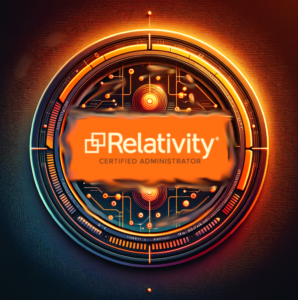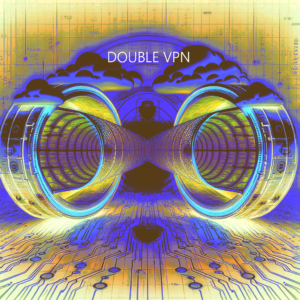In the realm of legal proceedings and information governance, the Electronic Discovery Reference Model (EDRM) stands as a pivotal framework that delineates the stages involved in the handling of electronic data. As digital information becomes increasingly central to legal cases, understanding EDRM is crucial for legal professionals, IT specialists, and anyone involved in the eDiscovery process. This article aims to unpack the EDRM, offering insight into its components and their significance in eDiscovery.
What is EDRM?
EDRM, or Electronic Discovery Reference Model, provides a conceptual guide for the collection, processing, review, and analysis of electronic data in the context of legal proceedings. It was created to address the challenges associated with managing electronic data during litigation or investigations. The model is structured into nine stages, each representing a critical step in the eDiscovery process. These stages ensure that electronic data is handled efficiently, effectively, and ethically.
The Nine Stages of EDRM
- Information Governance: This foundational stage emphasizes the importance of managing information effectively across its lifecycle. It involves policies and practices that ensure data is accurately maintained, readily accessible, and disposed of when no longer needed.
- Identification: At this stage, parties identify potential sources of electronically stored information (ESI) relevant to the case. This includes understanding where data resides, from email servers to cloud storage and mobile devices.
- Preservation: Once relevant data sources are identified, steps must be taken to preserve the information, preventing data alteration or deletion. Legal holds are commonly issued to ensure data integrity.
- Collection: The collection phase involves gathering ESI from identified sources. The process must be defensible and documented, ensuring data is collected in a manner that maintains its authenticity and reliability.
- Processing: Collected data is then processed to convert it into a more usable format. This includes deduplication, indexing, and filtering to reduce volume and prepare data for review.
- Review: Perhaps the most critical stage, review involves examining processed data to determine relevance, privilege, and materiality to the case. Advanced tools, including artificial intelligence and machine learning, are increasingly used to enhance efficiency and accuracy.
- Analysis: Analysis goes beyond review to evaluate data for patterns, topics, and relationships. This stage provides deeper insights into the information, aiding in case strategy and understanding.
- Production: Relevant, non-privileged data is then produced to opposing counsel or regulatory bodies. This involves converting data into a mutually agreed format and ensuring sensitive information is adequately protected.
- Presentation: The final stage involves presenting the data in legal proceedings, whether in trials, depositions, or hearings. Data must be presented in a clear, comprehensible manner to support arguments or claims.
The Importance of EDRM in eDiscovery: EDRM offers a structured approach to eDiscovery, ensuring that electronic data is handled with the utmost care and precision. By adhering to the stages outlined in the model, legal professionals can ensure compliance with legal obligations, minimize risks, and enhance the efficiency of the discovery process. Furthermore, EDRM promotes a common language and understanding among diverse stakeholders involved in eDiscovery, from legal teams to IT professionals and service providers. The Electronic Discovery Reference Model is a vital framework in the modern legal landscape, where digital information plays a crucial role. By understanding and implementing the stages of EDRM, parties involved in litigation or investigations can manage electronic data effectively, ensuring that justice is served in an increasingly digital world. As technology continues to evolve, so too will the EDRM, adapting to new challenges and opportunities in the field of eDiscovery.
Understanding Project Scope in eDiscovery
In the realm of legal proceedings and information management, eDiscovery (electronic discovery) stands out as a critical process. It involves the identification, collection, preservation, review, and production of electronic documents in legal cases. Given the vast amounts of data generated and stored electronically, eDiscovery can be complex and demanding. A crucial element that significantly influences the efficiency and success of eDiscovery processes is the “project scope.” This article delves into what project scope entails within eDiscovery and its paramount importance.
Defining Project Scope in eDiscovery
Project scope in eDiscovery refers to the clearly defined boundaries and objectives of an eDiscovery project. It encompasses the extent of electronic data to be discovered, the timelines, the legal issues addressed, and the resources allocated. Defining the project scope involves understanding the specific needs and constraints of the case at hand, including the types of documents to be collected, the relevant time periods, the custodians of interest, and the technological tools and processes to be utilized.
Importance of a Well-Defined Project Scope
- Cost Management: eDiscovery can be expensive, with costs escalating quickly if the scope is not clearly defined. A well-established project scope helps in predicting and controlling costs by limiting the data volume for review and focusing resources on what is truly relevant to the case.
- Efficiency and Time Management: By setting clear boundaries, teams can prioritize tasks, allocate resources effectively, and adhere to strict legal deadlines. This ensures that efforts are concentrated on the most critical aspects of the discovery process, thus optimizing time management.
- Risk Mitigation: A clear project scope helps in identifying potential challenges and bottlenecks early in the process. By addressing these risks proactively, organizations can avoid last-minute hurdles, such as the need for additional data collection or review, that can jeopardize legal strategies.
- Enhanced Communication: Defining the project scope facilitates better communication among the legal team, IT specialists, and other stakeholders involved in the eDiscovery process. This clarity ensures that all parties are aligned with the objectives, methodologies, and expected outcomes of the project.
- Compliance and Legal Defensibility: A well-documented project scope helps in ensuring that the eDiscovery process adheres to legal obligations and court orders. This is crucial for maintaining the integrity of the process and ensuring that the discovery efforts are legally defensible.
Key Components of an eDiscovery Project Scope
- Data Identification: Detailed identification of sources of potentially relevant electronic information, including emails, documents, databases, and social media content.
- Timeframe: Specifying the relevant period for which electronic data will be considered.
- Custodians: Identifying individuals or entities likely to have relevant information.
- Legal Issues and Keywords: Outlining the legal issues at hand and developing a list of keywords and search terms to locate relevant documents.
- Technology and Processes: Defining the eDiscovery tools and methodologies to be used, such as data collection techniques, document review platforms, and analytical tools.
- Budget and Resources: Establishing a budget for the eDiscovery project and detailing the human, technological, and financial resources required.
The project scope in eDiscovery is not merely a procedural formality; it is a cornerstone for strategic planning and execution. A meticulously defined project scope lays the groundwork for a focused, efficient, and cost-effective discovery process. It ensures that the eDiscovery efforts are aligned with the legal objectives, thereby enhancing the chances of a favorable outcome. As the digital landscape continues to evolve, the importance of a well-structured project scope in managing the complexities of eDiscovery cannot be overstated.
In conclusion, the Electronic Discovery Reference Model (EDRM) and the concept of project scope in eDiscovery are integral to the modern landscape of legal proceedings and information governance. EDRM provides a structured, comprehensive framework that guides legal professionals and IT specialists through the complex process of managing electronic data in legal contexts. Each stage of EDRM, from Information Governance to Presentation, outlines critical steps for handling electronic data efficiently, effectively, and ethically, ensuring compliance with legal obligations and minimizing risks.
Understanding and defining the project scope within eDiscovery is equally crucial, as it sets clear boundaries and objectives for the discovery project. A well-defined project scope aids in cost management, efficiency, risk mitigation, and enhanced communication among all stakeholders involved. It ensures that eDiscovery efforts are focused, strategic, and aligned with the legal objectives of the case.
As digital information continues to grow in volume and complexity, the roles of EDRM and project scope in eDiscovery will only become more significant. Legal professionals, IT specialists, and other stakeholders must stay informed and adapt to new challenges and opportunities in eDiscovery. By embracing the principles of EDRM and diligently defining project scope, parties involved in litigation or investigations can navigate the digital terrain more effectively, ensuring that justice is served in an increasingly digital world. This simplified guide to EDRM and project scope in eDiscovery highlights the importance of structured processes and strategic planning in managing electronic data, serving as a foundational resource for those embarking on or involved in eDiscovery processes.
Rami Jaloudi is a Systems Engineer with over 15 years of experience in the Tech industry, including Systems Administration, Software Development, Cloud Computing, Network and Security. He enjoys working on developing new and innovative software solutions. Rami is passionate about using technology to solve real-world problems, and he has a proven track record of success in delivering high-quality products and services. In his spare time, Rami enjoys spending time with his family, reading, puzzles/games and digital art.
For literature and publication collaboration projects or other projects, feel free to send an email to RJaloudi@gmail.com or chat on WhatsApp-Instant-Chat








Hi, this is a comment.
To get started with moderating, editing, and deleting comments, please visit the Comments screen in the dashboard.
Commenter avatars come from Gravatar.